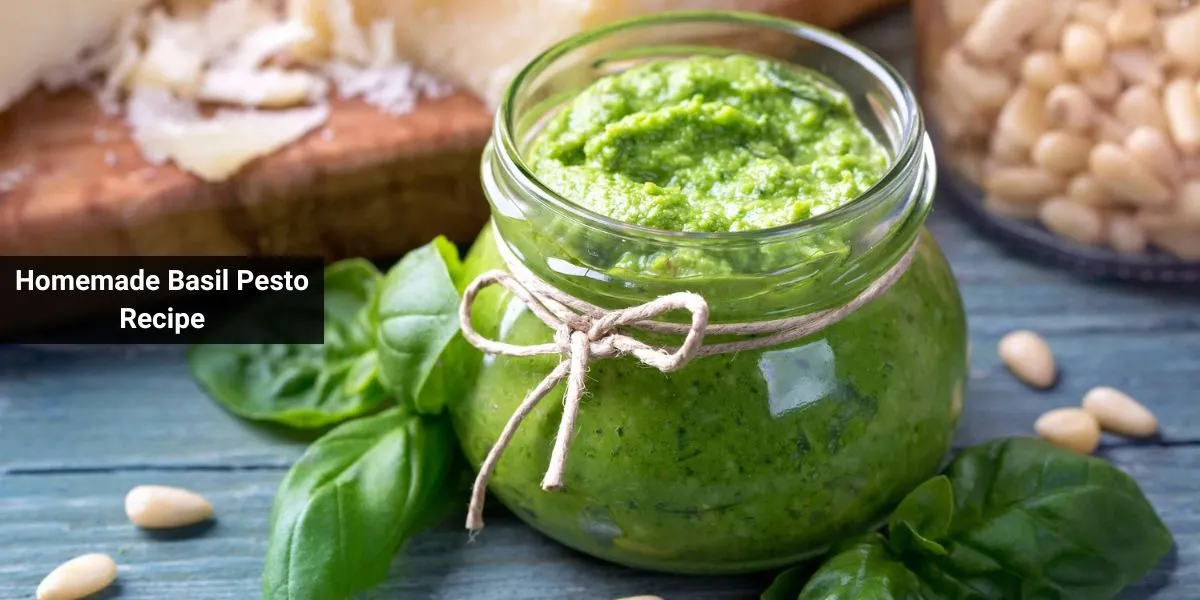Ever tasted something that instantly transported you to a sunny Italian garden? That’s what a spoonful of fresh, homemade basil pesto can do. Making your own pesto is not just about the burst of fresh flavors—it’s about bringing a piece of Italy right into your kitchen. Why settle for store-bought when you can create a vibrant, aromatic sauce that turns any ordinary meal into an extraordinary one?
What is Basil Pesto?
A Culinary Staple
Pesto, originally from Genoa in the Liguria region of northern Italy, is a sauce comprising crushed garlic, European pine nuts, coarse salt, basil leaves, hard cheese like Parmigiano-Reggiano (or sometimes Pecorino), all blended with olive oil. It’s not just a sauce—it’s a tradition.
The Ingredients You Need
Simple, Fresh Components
The magic of pesto lies in its simplicity. Here’s what you’ll need:
- Fresh Basil: About 2 packed cups of fresh leaves.
- Garlic: 2 cloves, peeled.
- Pine Nuts: 1/3 cup, lightly toasted to enhance their flavor.
- Parmesan Cheese: 1/2 cup, freshly grated.
- Extra Virgin Olive Oil: 2/3 cup, for a smooth, fluid texture.
- Salt: To taste, typically a pinch to enhance the flavors.
Choosing Quality Ingredients
Opt for the freshest basil you can find—bright green, aromatic leaves without any dark spots. Quality ingredients elevate the final product from good to great.
Preparing Your Ingredients
Prepping the Basil
Start by gently washing your basil leaves in cold water, then pat them dry with a paper towel. This step is crucial to remove any dirt without bruising the leaves.
Toasting the Pine Nuts
In a dry skillet over medium heat, toast the pine nuts until they’re golden and fragrant. Keep an eye on them, as they can burn quickly!
The Process: Making Pesto
Combining the Ingredients
In a food processor, combine the basil leaves, toasted pine nuts, peeled garlic, and grated cheese. Pulse a few times to chop and blend the ingredients. This step begins the release of the oils and flavors.
Adding the Olive Oil
With the processor running, slowly drizzle in the olive oil. Continue processing until the mixture forms a rich, smooth paste. If you prefer a thinner consistency, simply add more oil.
Seasoning Your Pesto
Perfecting the Taste
Taste your pesto and add salt as needed. If it tastes too bitter (sometimes caused by the garlic or basil), a small sprinkle of sugar can balance it out.
Storing Homemade Pesto
Keeping It Fresh
Homemade pesto can be stored in the refrigerator for up to a week. To preserve its bright green color, pour a thin layer of olive oil over the top before sealing it in an airtight container. For longer storage, pesto freezes beautifully—try freezing it in ice cube trays for easy, portion-sized use later.
Serving Suggestions
Versatile and Delicious
Pesto is incredibly versatile. Spread it on sandwiches, stir it into pasta, drizzle it over grilled vegetables, or use it as a marinade for chicken or fish. Its robust flavor enhances a wide variety of dishes.
Health Benefits of Basil Pesto
Nutritious and Flavorful
Basil is rich in vitamins A, K, and C, as well as minerals like magnesium, iron, and calcium. Olive oil is a great source of antioxidants and healthy fats, making pesto not just tasty but also beneficial for your health.
Troubleshooting Common Pesto Issues
Solutions to Common Problems
If your pesto is too thick, add more olive oil in small increments. If it’s too watery, add more basil leaves or Parmesan cheese to thicken it.
Conclusion: Your Perfect Pesto Awaits
Homemade basil pesto is a delightful addition to any cook’s repertoire. It’s simple to make, yet it brings a depth of flavor to dishes that bottled sauces can’t match. Whether you’re a seasoned chef or a kitchen novice, mastering this basil pesto recipe can elevate your cooking game and impress your diners.
FAQ:
Q. Can I make pesto without nuts?
Yes, you can substitute the pine nuts with seeds like sunflower or pumpkin for a nut-free version.
Q. What can I use instead of Parmesan cheese?
For a vegan alternative, nutritional yeast or vegan Parmesan can replace regular cheese without losing much of the traditional flavor.
Q. How can I make my pesto even greener?
Blanching the basil leaves before blending can help lock in a bright green color.
Q. Can I use other types of nuts?
Absolutely! Walnuts or almonds are great substitutes for pine nuts and offer a slightly different flavor profile.
Q. How long will homemade pesto last in the freezer?
When properly stored, homemade pesto can last in the freezer for up to 3-6 months.

